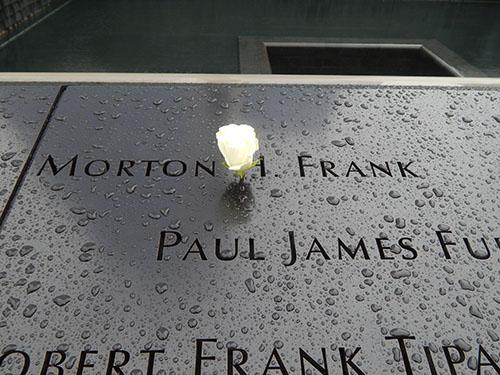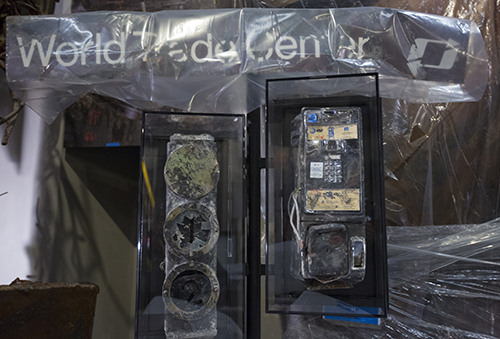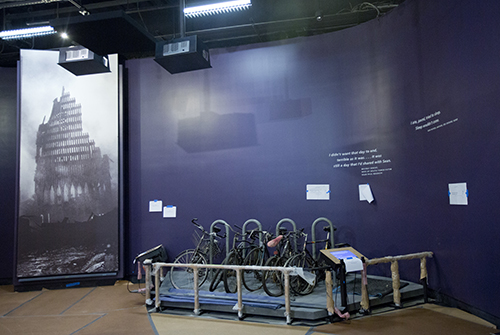Make a donation to the museum
Remembering 9/11: One Stamp at a Time
Remembering 9/11: One Stamp at a Time

Lucas Berstein, now a high school senior, was just starting kindergarten when his uncle, Morton H. Frank, a vice president at Cantor Fitzgerald, died in the World Trade Center attacks in 2001. Although he was too young to grasp the larger implications of these terrorist acts, he felt his family’s pain. Lucas fondly remembered traveling from his home in suburban Philadelphia to New York City, to visit "Uncle Morty" at his Tribeca apartment.
As Lucas learned more about 9/11 from teachers and classmates, he began to grasp his personal connection to the national tragedy. At school he also learned about the Paper Clip Project (documented in Peter Shroeder’s book, “Six Million Paper Clips”), a collaborative effort undertaken by a class of middle school children and their rural Tennessee community as an effort to grasp the magnitude of human loss suffered during the Holocaust. Lucas and a friend, Erica Feinstein, decided to spearhead their own project: collecting a unique postage stamp in honor of each individual killed on 9/11 victim, from which they planned to fashion a memorial. With support and encouragement from teachers, fellow students, parents, neighbors and the school’s principal, Lucas and Erica soon amassed 2,973 stamps (representing the 9/11 victim count at the time) and collaged them into two vertical columns evoking the twin towers. This design was inspired by an art teacher who had shown them a picture of Matisse’s The Beasts of the Sea (1950). Floating over the mosaic of multicolored, variously shaped stamps were the names of the dead.
Remembering 9/11: One Stamp at a Time, measuring 5 feet high and 4 ½ feet wide after framing, was exhibited for many years the entranceway to the school attended by Lucas and Erica. In 2006, Lucas recalled: “Every day when the students walk to the cafeteria, they pass by our memorial and it makes us feel special.” This year, he presented the piece to the 9/11 Memorial Museum in tribute to his uncle, Morty. Age 31 when he perished, Morton Frank would have celebrated another birthday two days ago, February 5.
By Jan Seidler Ramirez, 9/11 Memorial Museum Chief Curator
Previous Post
Relics from the Highest and Lowest Areas of World Trade Center’s South Tower

A pay telephone from the 107th floor South Tower Observation Deck and signal from the below ground PATH train station that were found in the wreckage at Ground Zero demonstrate the diversity of material recovered from all levels of the Twin Towers.
Next Post
Bicycle Rack Recovered from WTC on Exhibit at 9/11 Memorial Museum

A bicycle rack found largely intact on Vesey Street after the attacks on September 11, will be a part of the historic 9/11 Memorial Museum when it opens this May.